While visiting CCCADI’s inaugural exhibit in its new East Harlem home, I had the opportunity to speak to one of its curators, Regina Bultron-Bengoa.
Just what is CCCADI?
The Caribbean Cultural Center African Diaspora Institute is a multi-disciplinary arts center that showcases and promotes the distinct contributions of African Diaspora cultures.
How would you define its mission?
Through arts, education and activism it strives to advance change by uniting the various cultures of the African Diaspora, while promoting their value.
When was it originally established?
Dr. Marta Moreno Vega founded it in 1966 as a center where African and Native cultures of Caribbean and Latin American countries could be recognized and honored. Its first home was on East 87th Street and its last home was in a brownstone in Hell’s Kitchen.
Can you tell us something about its present locale here in this landmark space on East 125 Street in East Harlem?
A few years back, several shuttered landmark firehouses were offered to cultural institutions. With city and state support, nine million dollars were raised to renovate this particular historic one for CCCADI, and on September 16, 2004, we broke ground.
Who is its audience?
We have a wide audience from students and educators to arts professionals to families. We offer a huge range of free or low-cost exhibits, workshops and activities.
Your inaugural exhibit, Home, Memory, and Future is quite impressive. It is divided into three distinct parts.
Yes. Part I: Harlem: East and West features the works of three acclaimed photographers who have been documenting Harlem since the 70’s. Part II: Harlem and Home in the Global Context showcases artworks that suggest how cultural traditions are used to establish “home” in distant places. And Part III: Mi Quirido Barrio (My Beloved Community) – focusing on the social history of El Barrio — takes place outdoors and in cyberspace, using augmented reality. Among its themes are: migration, nostalgia for the past. gentrification and looking to the future.
Can you tell us some more about the outdoor element of the exhibit?
Yes. It features locations of importance within the social history of El Barrio. Among these are memorial walls painted on the streets — whose history is documented on a free mobile app, Blippar. Through augmented reality, the app allows us to bring the past to life.
That is quite amazing! How has the response been to CCCADI‘s new home and inaugural exhibit?
The response has been great. There were long lines for the fall opening, and folks who see it love the art and identify with it.
How can folks contact CCCADI if they would like to visit or become involved?
They can email: info@cccadi.org
Images
1 & 2 Adrian “Viajero” Roman, Mixed media, 2016
3 Scherezade Garcia, Sea of Wonder, Mixed media, 2016
4 & 5 Oliver Rios & Luis Martinez, Memorial Walls, as seen on the Blippar app while on site
Photo credits: 1-3 Lois Stavsky; 4-5 Courtesy CCCADI
Interview conducted and edited by Lois Stavsky
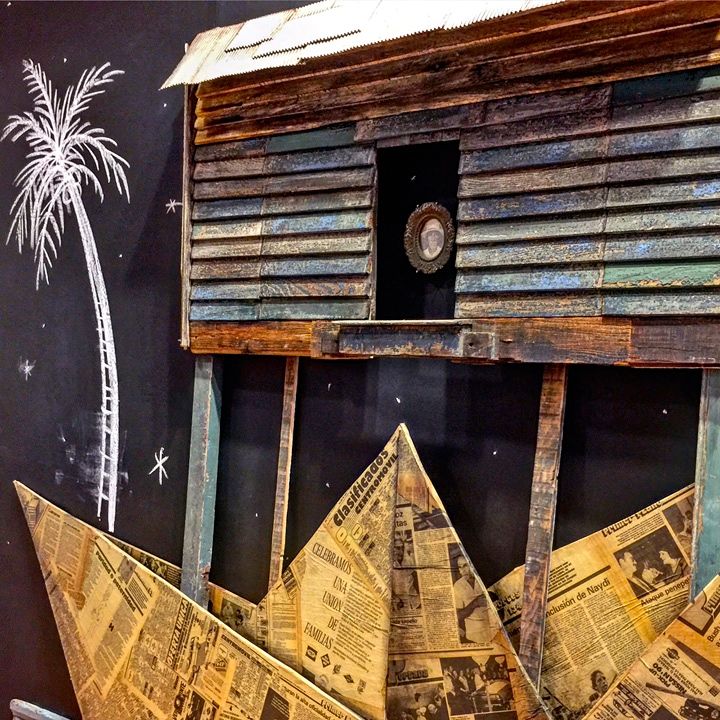
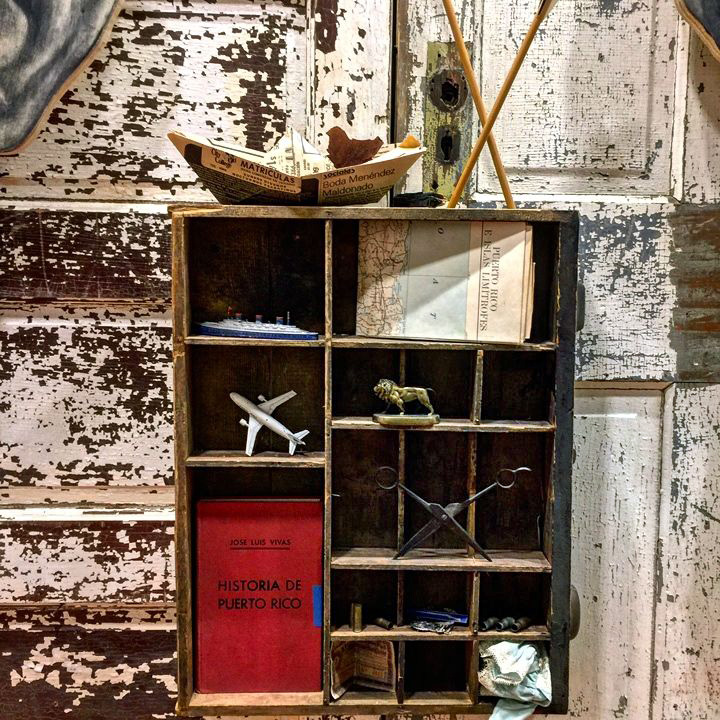
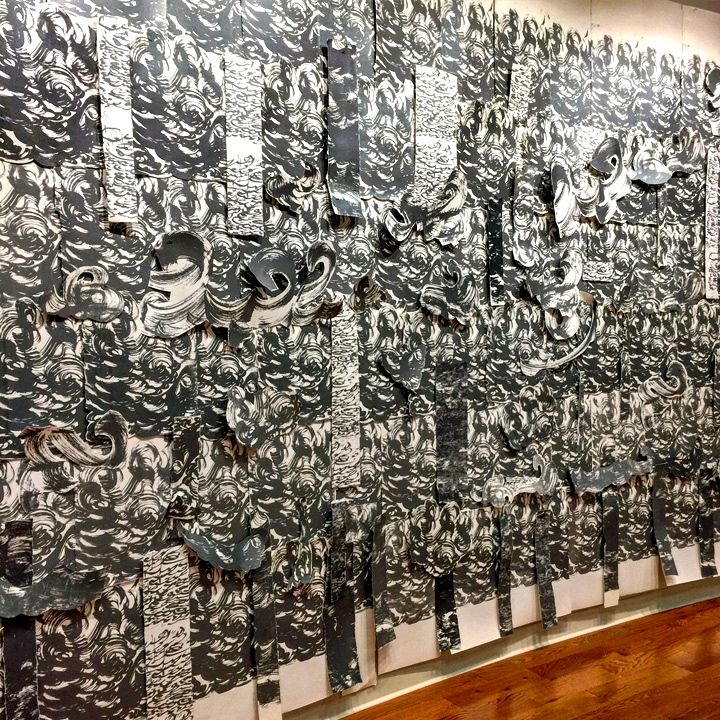
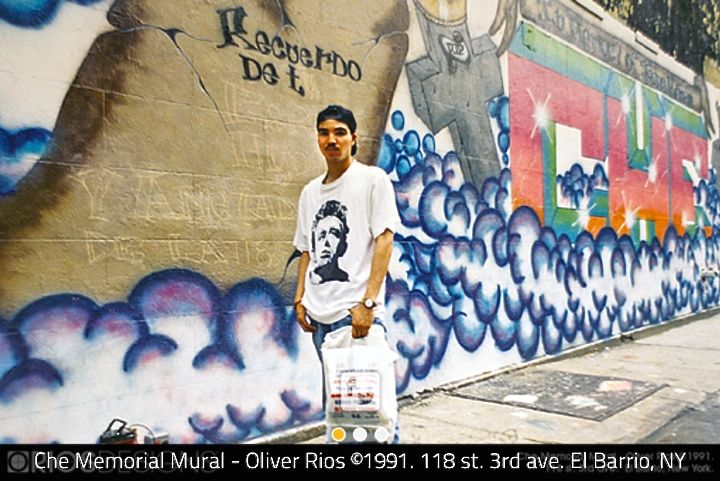
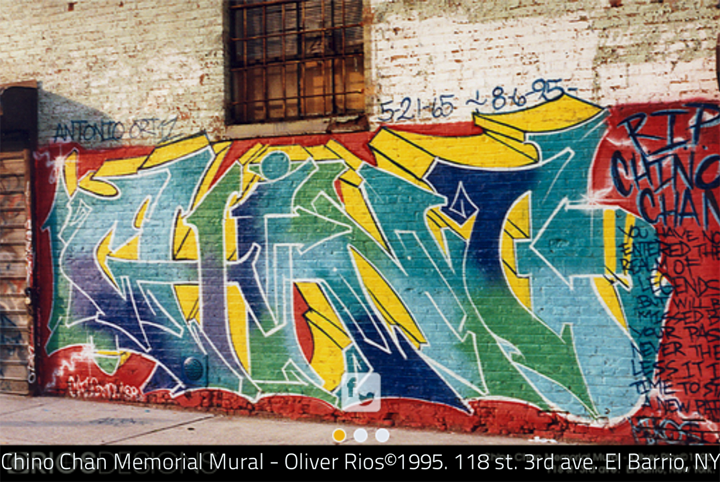

{ 1 comment… read it below or add one }
Virtual Guided Tours of Caribbean Cultural Center African Diaspora
Past Exhibitions Now Available On-Line
New York, New York — While you’re staying safe at home during the current Covid 19 emergency, you can still join the Caribbean Cultural Center African Diaspora Institute (CCCADI) in Harlem online and experience two of our groundbreaking exhibitions, the 2017, Race, Myth, Art, and Justice! and the 2018 Liminal Space. Simply visit our Google Culture page at: https://artsandculture.google.com/partner/cccadi
About the Exhibitions
RACE, MYTH, ART AND JUSTICE! Curated by Grace Aneiza Ali and C. Daniel Dawson, Project Coordinator: Marta Moreno Vega, President of the Creative Justice Initiative
Presented in 2017, Race, Myth, Art and Justice! explores intersecting ideas of race, myth, art, and justice through the lens and unique interpretations of twelve inter-generational photographers. Via innovative contemporary art practices, the photographers engage with the premise of “race” as a social construct rooted in myth, while simultaneously interrogating its profound implications and indignities on our 21st-century lives.
Featured Artists: Kwesi Abbensetts, Faisal Abdu’Allah, Terry Boddie, Jonathan Gardenhire, John E. Dowell, Jr. Adama Delphine Fawundu, Deborah Jack, Zoraida Lopez-Diago, Radcliffe Roye, Stan Squirewell, Ming Smith, Deborah Willis.
With roots in the United States and throughout Africa and the Caribbean—including Guyana, Jamaica, Nevis, Panama, Puerto Rico, St. Martin, and Sierra Leone—the photographers draw from an African Diasporic worldview steeped in their personal experiences as well as larger geographical political histories. Collectively, their images offer a poignant and provocative portrait of the ways the mythology of race and the pursuit of justice continue to permeate the global African experience.
* * * * *
LIMINAL SPACE, Curated by Grace Aneiza Ali
On view in 2018, Liminal Space honors contemporary artists from Guyana, who through their creative vision are examining what dislocation and dispossession from one’s homeland means. Inevitably exposing the systematic pattern of displacement endured from Guyana, East Harlem, Brooklyn, the Bronx, to Brazil. This exhibit encourages us to think about how we address the unjust mass consolidation of wealth and how this negatively impacts Afro-descendant communities globally.
Featured Artists: Kwesi Abbensetts, Damali Abrams, Khadija Benn, Victor Davson, Stanley Greaves, Carl Hazlewood, Dominque Hunter, Michael Lam, Donald Locke, Andrew Lyght, Suchitra Mattai, Christie Neptune, Mason Richards, Karran Sahadeo, Keisha Scarville, Arlington Weithers.
Liminal Space also speaks to the broader emergence of the Caribbean diaspora in global metropolises. While these artists narrate experiences specific to the Guyanese diaspora, they simultaneously unpack the act of migration as a constant site of engagement and what it means to be an immigrant in our 21st-century world.
EXHIBITIONS AT CCCADI – Since its founding in 1976, the intersection of arts, culture and social justice has been the foundation of CCCADI exhibitions program. For over 43 years, CCCADI has promoted the aesthetics and creative expressions of artists, scholars and researchers focused on connecting African Diaspora themes in their work. The Center has consistently provided space for artists, exhibitions, and dialogues across generational connections to provide cultural context, expansion and deepening of cultural threads that are shared by artists of the African Diaspora.
CULTURAL RESPONSE + COMMUNITY RESOURCES PORTAL
In response to the current Covid 19 emergency, CCCADI has launched a Cultural Response + Community Resources Portal which can be found at http://www.cccadi.org, and includes important information for our community, Emergency Resources List for Artists, uplifting content straight from our archives, free exhibition education guides for parents and more.
ABOUT CCCADI – The Caribbean Cultural Center African Diaspora Institute (CCCADI) is an arts, culture, education, and media organization that advances cultural equity and justice for African descendant communities. For more information about CCCADI and our Resources Portal, please visit: http://www.cccadi.org.